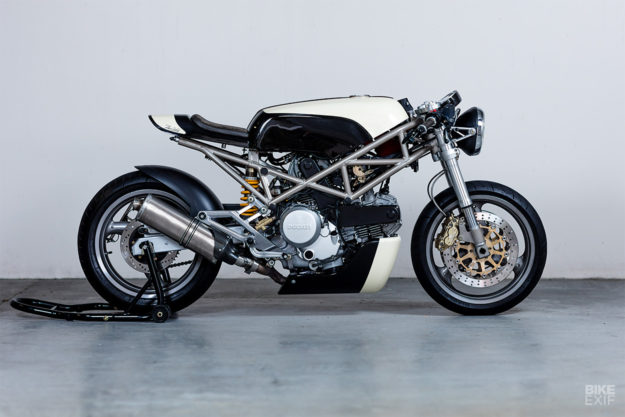
We’ve seen builders manipulate steel, aluminum, titanium, fiberglass and carbon fiber. But this creamy smooth Ducati Monster 400 cafe racer features a material that very few people know about: basalt fiber. Indeed, we’ve only come across it once before, on Mark Atkinson’s breathtaking BMW Alpha landspeeder.
For 25-year-old New Zealander Max Betteridge, it was a material he wanted to use even before he had a bike to try it out on.

“In many ways, basalt is the new carbon,” he tells us. “It has similar performance to carbon but at a lower price. What captured me was the subtle gold hue in its reflection—in contrast to carbon’s harsh weave, basalt appears almost black until the light hits it at just the right angle. Then it reveals a surreal depth.”
Max works as a product development engineer in Auckland, designing products that treat sleep apnea. Building bikes is a hobby for him—an obsession that originally started with vintage cars.
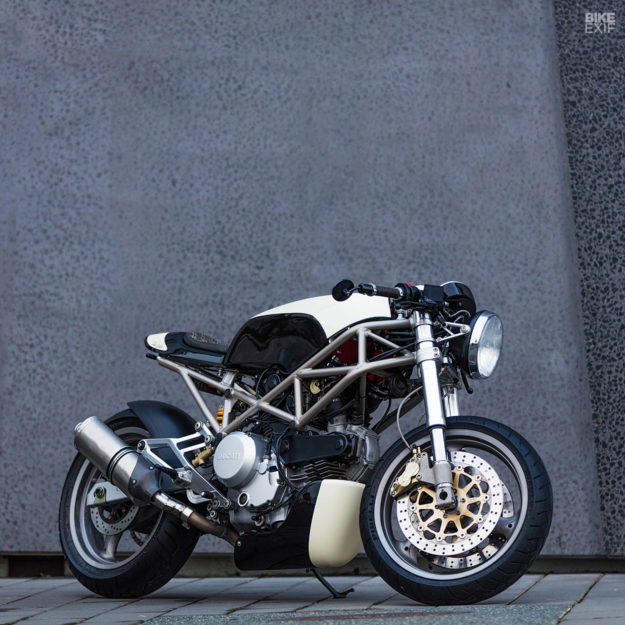
Remarkably, Max considers his baby Monster a budget build. “I bought the donor bike for about one third of the price of the cheapest brand new Ducati,” he reveals. “The paint, powder coating and anodizing were the only things which I didn’t do myself. In the end, the paint cost almost as much as all the other costs combined.”
Max’s day-to-day involves a lot of surface modeling, so that’s how he approached the project. As soon as he had the Monster in his hands, he 3D scanned it and began building the bodywork in CAD. It meant he could design everything to fit just right.
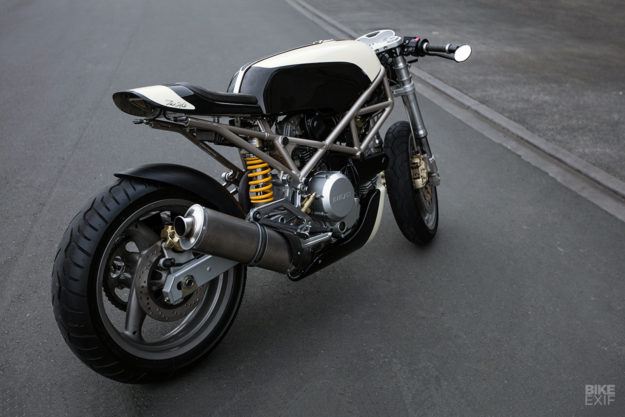
Remarkably, Max doesn’t have a proper workshop at home. He has no way of transporting a whole bike, either. So he would take parts of the Ducati to work in the morning, work on them in his lunch break, then take them home again in the evening.
His goal was to build something minimal, sleek and unique. “I knew from the beginning that I had to ditch the original tank,” he says. “But I was still naïve to the difficulties of making a visual composite part. I thought this project would be easy.”
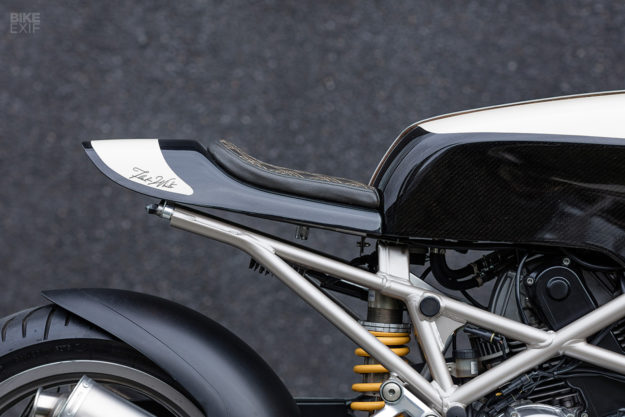
“But by the time I had started my first part and learned how much work was involved, I’d already committed.”
The tank, tail section and belly pan are all molded from basalt fiber. For each part, Max would create a CNC, laser- or hand-cut mold, before laying down the final form in basalt. Most of the parts took multiple attempts before they came out good enough to use.
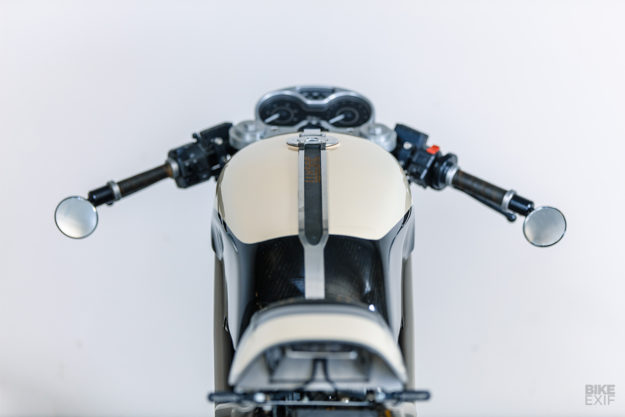
From his initial 3D scan, Max knew that the original airbox was going to get in his way. So he ditched it for a pair of Uni foam filters, and started rearranging everything under the new tank to fit with its long, narrow design.
The Monster’s frame was shortened and freed of any superfluous brackets. Max designed a new subframe to support the seat and provide mounting points for the lights. He then water jet-cut the final part from stainless steel.
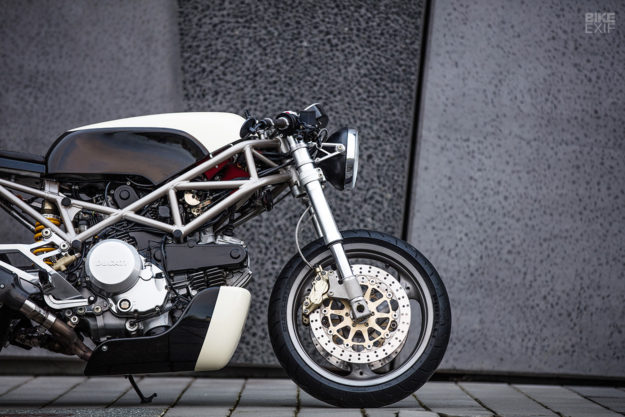
Beautiful hand-made and aftermarket parts are sprinkled throughout the build. The triple clamp, headlight brackets and grip clamps were all designed and CNC-machined by Max, but the license plate bracket was water jet-cut. The taillight, turn signals, tank filler cap, clip-ons, rear sets and bar-end mirrors are well-integrated off-the-shelf bits.
Max even did his own leather work, which most builders prefer to outsource. He laser-cut what he needed for the seat, grips and tank strap from a single hide.
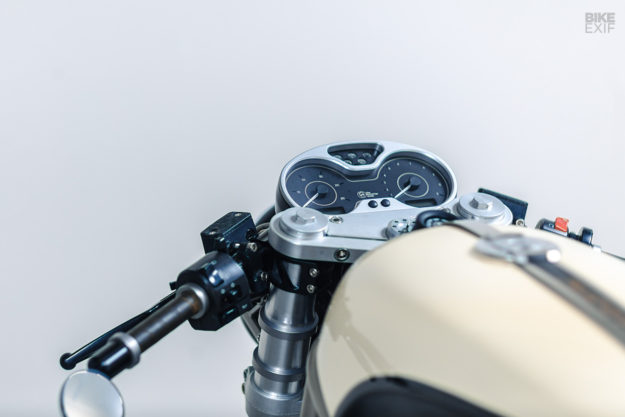
There are two details that really stand out, and the first is the redesigned dash. The Monster’s original gauges were damaged, but Max wanted to keep the mechanical and electrical side of the bike as close to stock as possible. So he stripped the OEM clocks and built them into a new basalt fiber enclosure.
He also milled out a new faceplate and bezel, got them anodized, and then laser-etched new markings into them. Everything was then repackaged behind an acrylic front.

The other standout part is the custom-made tank strap. The laser-etched Ducati logo is a nice touch, but it’s the way the strap steps up to the gas cap that’s really neat. “The straps were initially flat,” explains Max, “but my workmate convinced me that it needed to jog up to meet the top of the filler, then he convinced me that a straight jog wouldn’t be good enough…can you believe this is the same workmate who convinced me that doing all the bodywork out of basalt would be easy?”
“So I CNC-milled an aluminum press tool and pressed the straps in a twenty ton press to form the jog. After all the effort, I think this became my favorite feature on the bike.”
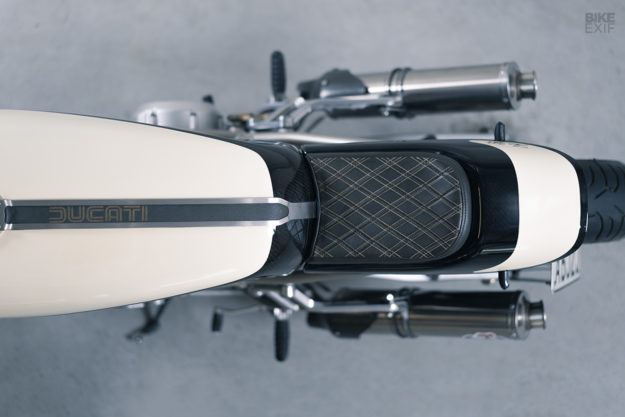
Max’s other big challenge was moving the Monster’s twin Termignoni cans to a lower-than-stock position. Fabricating new exhaust hangars was easy; rigging up a new set of intermediate pipes, less so. Since he couldn’t take the bike to a local shop to modify the system for him, Max had to do it the hard way.
He 3D scanned the exhaust at work, created a CAD model, then ‘unrolled’ it to create a flat model with each section connected. This was then water jet-cut out of stainless plate, before Max folded and welded each segment together. Only then could he take it home, pop it on the bike and see if it fitted.

“Almost everyone I spoke to said the idea wasn’t going to work, or that I should be doing it another way,” he admits. “But I take great pride in the fact that they fitted first time!”
Max knows that the 400 is not the quickest Monster on the road, but performance isn’t really the point here. “It was never intended to be a fast bike and I never intended to try and make it one,” he says.
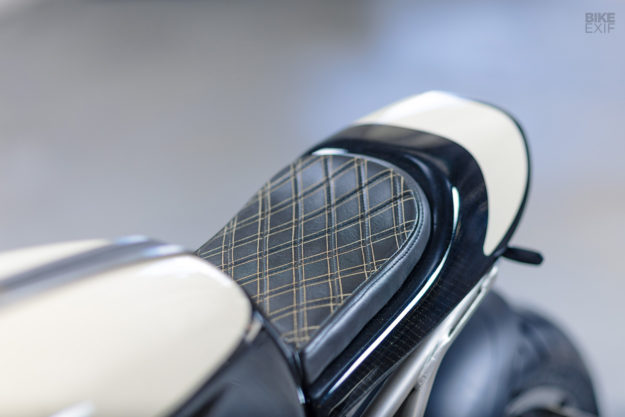
“People might argue that, for example, the belly pan on this bike doesn’t have a purpose and it adds unnecessary weight. But for me, the purpose is the aesthetic and the visual balance. This bike is designed to make an impact through its form and proportions.”
“My most validating moment so far was seeing an elderly couple admiring it in the car park, and the elderly woman, the most unlikely of people, starting a conversation with me about how it looks. I can’t say this bike looks categorically better or worse than the original, but it seems to be having the effect I was going for.”
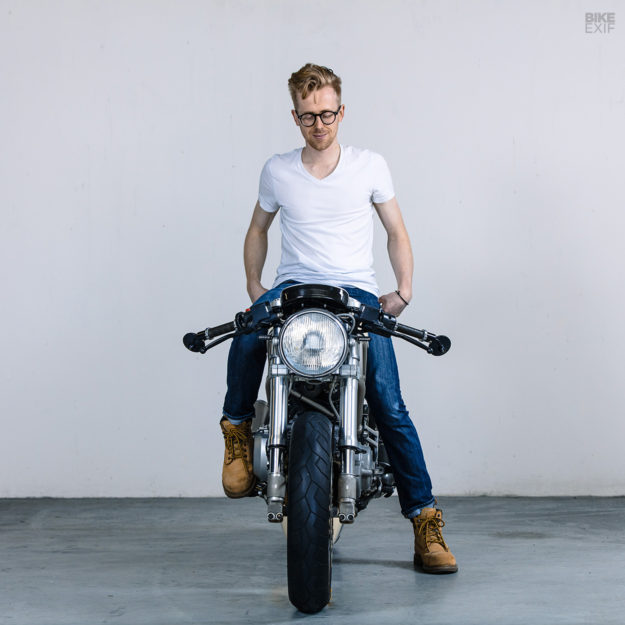
As for the Monster’s stance and flow, we think Max nailed it. And the livery’s spot-on too; a cream color called ‘Ferarri Avorio,’ with plenty of clear-coated basalt to show off the handiwork. Even the frame looks killer, in a matt champagne powder coat.
It reminds us of a flat white—which is exactly what Max has called it. “In New Zealand, nine out of ten coffee orders at a café will be a flat white. It’s an absolute staple in our diet, and New Zealand’s interpretation of an Italian classic.”
“In the same way, the Ducati Flat White is my take on what I think is Italy’s most iconic bike.”
Detailed build diary | Instagram | Images and video by Make Shop